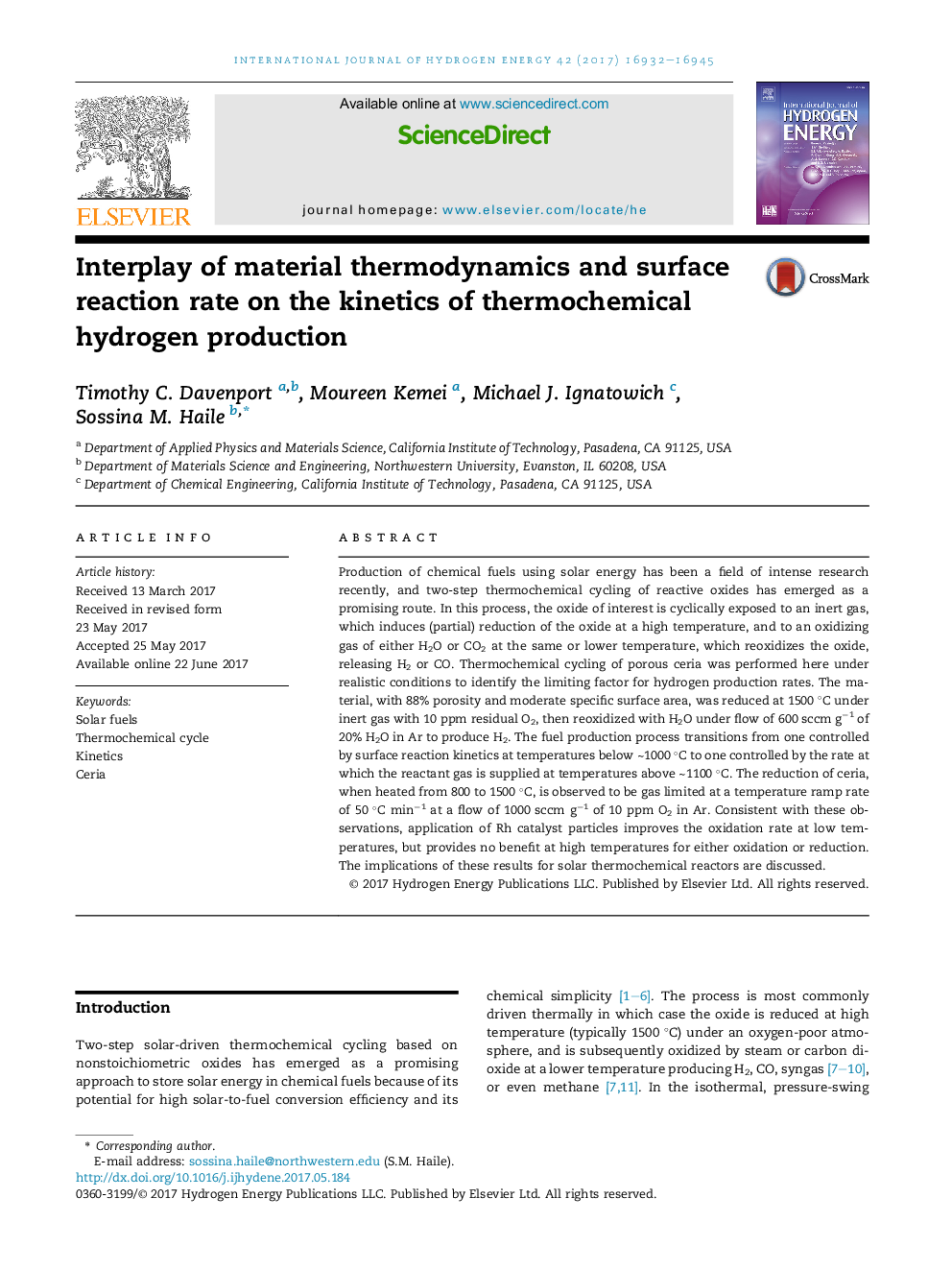| کد مقاله | کد نشریه | سال انتشار | مقاله انگلیسی | نسخه تمام متن |
|---|---|---|---|---|
| 5146015 | 1497350 | 2017 | 14 صفحه PDF | دانلود رایگان |

- Oxidation kinetics transition from surface-to gas-limited with rising temperature.
- Oxidation rate is maximized at an intermediate temperature of â¼1000 °C.
- Addition of Rh on ceria enhances oxidation rate only in surface-limited regime.
- Reduction kinetics are gas-limited at temperature ramp rates up to 50 °C minâ1.
- Adherence of oxide to quasi-equilibrium behavior simplifies reactor modeling.
Production of chemical fuels using solar energy has been a field of intense research recently, and two-step thermochemical cycling of reactive oxides has emerged as a promising route. In this process, the oxide of interest is cyclically exposed to an inert gas, which induces (partial) reduction of the oxide at a high temperature, and to an oxidizing gas of either H2O or CO2 at the same or lower temperature, which reoxidizes the oxide, releasing H2 or CO. Thermochemical cycling of porous ceria was performed here under realistic conditions to identify the limiting factor for hydrogen production rates. The material, with 88% porosity and moderate specific surface area, was reduced at 1500 °C under inert gas with 10 ppm residual O2, then reoxidized with H2O under flow of 600 sccm gâ1 of 20% H2O in Ar to produce H2. The fuel production process transitions from one controlled by surface reaction kinetics at temperatures below â¼1000 °C to one controlled by the rate at which the reactant gas is supplied at temperatures above â¼1100 °C. The reduction of ceria, when heated from 800 to 1500 °C, is observed to be gas limited at a temperature ramp rate of 50 °C minâ1 at a flow of 1000 sccm gâ1 of 10 ppm O2 in Ar. Consistent with these observations, application of Rh catalyst particles improves the oxidation rate at low temperatures, but provides no benefit at high temperatures for either oxidation or reduction. The implications of these results for solar thermochemical reactors are discussed.
276
Journal: International Journal of Hydrogen Energy - Volume 42, Issue 27, 6 July 2017, Pages 16932-16945